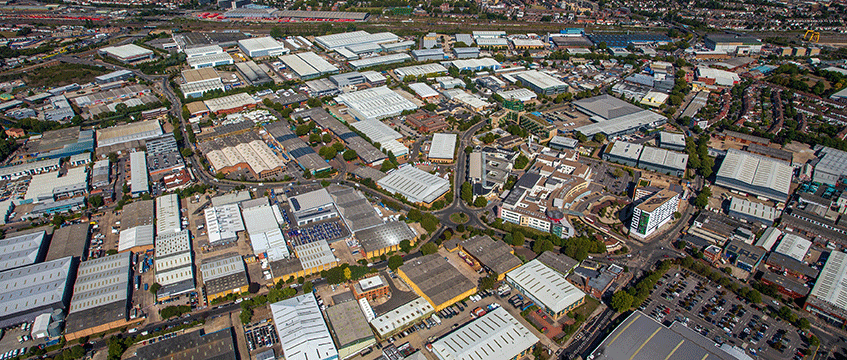Industrial traders could be losing out on higher land values if they do not use more detailed methodology that factors in cash-flow forecasts, new research by Knight Frank has found.
Some prices paid for prime land this year fell short of more detailed estimates that account for prime rents and yields, according to the firm’s latest industrial land values report, which applied a new cash-flow valuation model across 377 local authorities to determine how rising costs of debt and softening yields will impact values.
The report highlighted that a circa 5.7-acre site transacted for some £19m per acre in Park Royal, west London, in March this year. This compared with an average industrial land value of £9m, based on Knight Frank’s cash-flow model. However, researchers found that after applying prime rent of £30 per sq ft and a 3.25% yield, the value reached £22.7m per acre.
The findings also showed scenarios where prices paid were below average land values. The report underlined that the four-acre Belvedere Industrial Estate in Bexley sold for £2.5m per acre in January this year, below an estimated average land value of £4.6m.
The Park Royal deal reflected the highest prime land value in Q1 this year. This was followed by Greenford, Ealing, with £20.8m per acre and Bow in Tower Hamlets, at £19.8m per acre.
Prime yields for Greater London have been estimated at 3.25%, with 3.5% for the South East and 3.75% for the eastern region.
The top picks for forecast land value growth were the boroughs of Newham and Tower Hamlets, with 40% growth expected over the next three years.
Average industrial land values have risen by 60% in the year to Q1 2022 and by 163% over the past three years. Researchers said 58% of industrial land value growth was driven by increasing rental growth expectations, while 45% was bolstered by capital value growth forecasts.
In London, the value uplift was mainly driven by rising capital values. This was underpinned by a severe shortage of industrial land, strong demand for last-mile distribution and the Greater London Authority’s support for co-locating warehousing and other uses, such as residential.
The report said markets that are more driven by capital growth will likely see the biggest impact from widening yields. It showed a 50bps outward shift in yields will lead to a circa 10% decline in land values in some London submarkets.
Claire Williams, head of industrial and logistics research at Knight Frank, said: “Rising cost inflation and debt pricing mean that purchasing decisions and financial underwritings are coming under greater scrutiny and understanding what drives land value is more important than ever before.
“This model enables us to look forward, to anticipate and understand how these changes could manifest in industrial land values without waiting for transactional evidence. It shows industrial land values have risen 60% in the last year alone, but the underlying drivers vary according to location.
“Capital value growth, underpinned by a severe shortage of developable land, is the main factor in London, and forecast rental income growth the primary driver in most other UK locations. This tells us that land values should remain resilient in most locations, even as yields soften, due to the underlying strength of the occupational market and the undersupply of stock which continues to fuel rental growth.”
To send feedback, e-mail pui-guan.man@eg.co.uk or tweet @PuiGuanM or @EGPropertyNews
See who’s transacting the most industrial space in the UK >>











